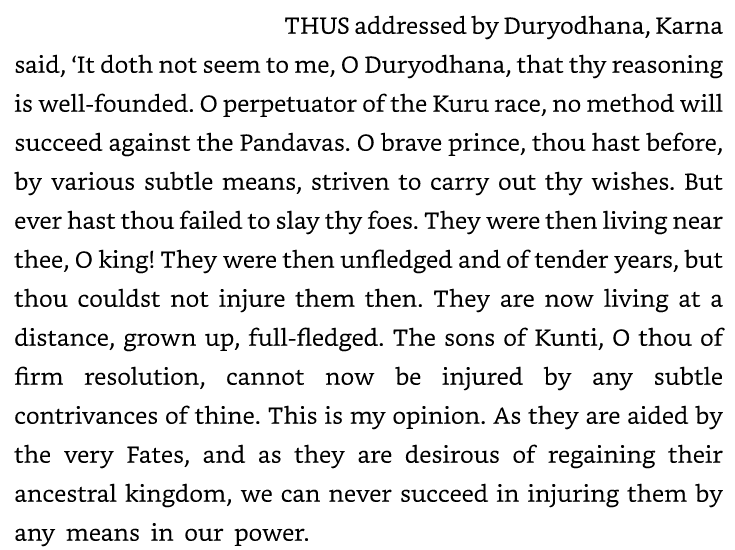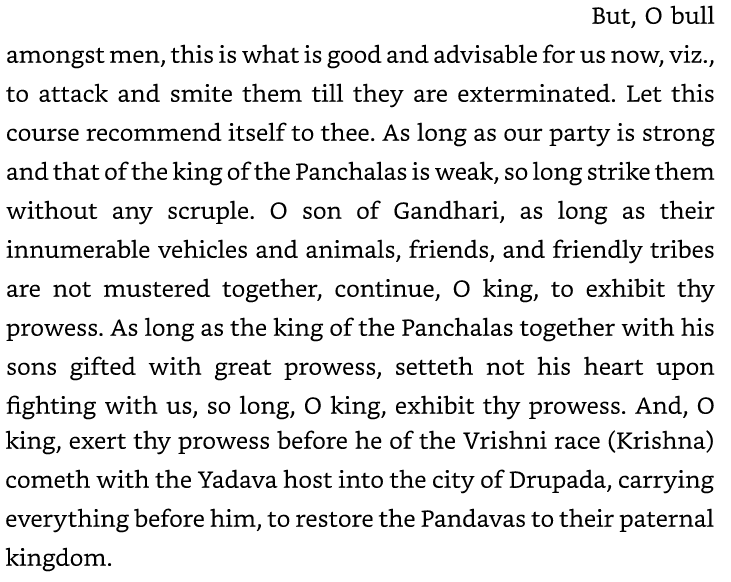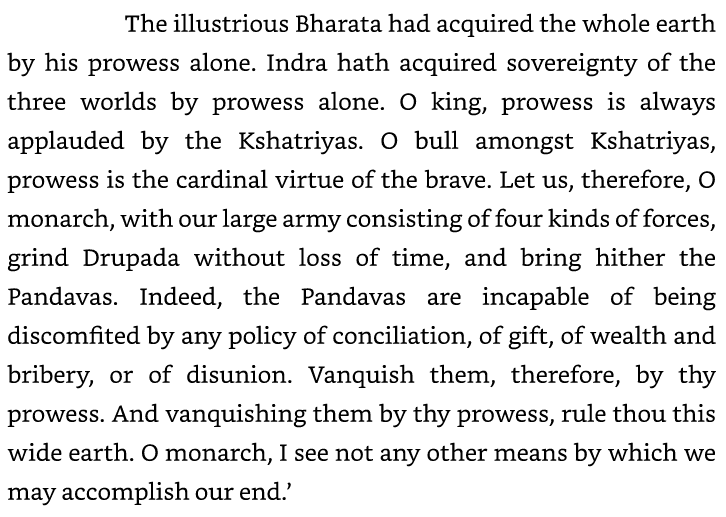What Plan did Karna Make Against the Pandavas and Draupadi After Their Wedding?

When Karna and Duryodhana learned that the Pandavas had planned to return to Hastinapura after their marriage with Draupadi, they were concerned about Duryodhana losing their power in the Kuru kingdom. Duryodhana was the crowned prince and did not want to lose that position. Karna, being his close friend, and someone who disliked the Pandavas with the same intensity, supported Duryodhana in every way he could. With a mutual desire to keep the Pandavas out of power, they approached the king, Dhritarashtra, to make a plan against the Pandavas.
After Duryodhana proposed his plan to use deceit against the Pandavas, Karna was asked for his opinion. He began by explaining to Duryodhana why his strategies may not work against the Pandavas, and then went on to propose his own strategy which was to defeat the Pandavas by force.



After politely refuting Duryodhana’s strategy, Karna proposed his own strategy of using force against the Pandavas as long as they were weaker than the Kauravas.

Karna follows on to justify his proposal using examples of Indra and Bharat. Both Indra, the lord of heaven, and Bharat, an illustrious Kuru ancestor, had used force to bring their opponents under their control. Therefore, according to Karna, using force was the right way for the brave.

As we can see, Duryodhana wanted to use deceit while Karna wanted to use force to smite the Pandavas. If you’re wondering whose strategy was used, the answer is — in this case, neither. When they presented their strategies to the king, Dhritarashtra asked them to consult with Bhishma and Drona before finalizing the strategy. When they met Bhishma and Drona, Duryodhana did not even put forth his proposal of deceit while Karna’s proposal of using force against the Pandavas was unacceptable to both the elders. Eventually, it was decided that half the kingdom would be given to the Pandavas.
However, the Kauravas did use deceit. While dividing the kingdom, Dhritarashtra gave Khandavaprastha — the most barren part of the kingdom — to the Pandavas, and kept the part that flourished, for his son Duryodhana.
Author’s Note: I am amazed at how this beautiful epic — The Mahabharata — constantly gives us examples that illustrate the subtle dharma — the dharma that goes beyond rules and formulae. Sri Krishna exhorts us to cultivate “yogastha buddhi” to understand the subtle dharma.
In this example, we see how Karna used the same strategy that the great emperor Bharath had used, and yet, King Bharat’s actions were aligned with dharma while Karna’s were not.
